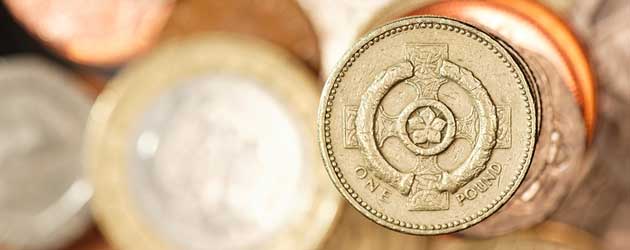
The Pound to US Dollar exchange rate (GBP/USD) declined by around -0.9 cents yesterday afternoon to touch an 11-day low of 1.5448. The sudden landslide in Sterling sentiment did not appear to be caused by a single fundamental cause, however, there were reports that a UK clearer sold large amounts of the currency during the New York session.
Later this week the Bank of England is set to announce its benchmark interest rate and asset purchasing target for May. With inflation continuing to overshoot the BoE’s 2.0% target, at 2.8%, markets have grown accustomed to Bank of England meetings going by without further monetary loosening. Indeed, the BoE are widely expected to maintain the current record low interest rate of 0.50% and the current asset purchasing target of £375 billion at the upcoming meeting. The recent run of strong British data – 0.3% first quarter growth, better-than-expected Construction and Manufacturing PMI results, and robust Service Sector performance – has brightened the UK economic outlook and thus made it even less likely that the BoE will opt for further QE during Thursday’s meeting.
Nida Ali of Ernst & Young Item Club said:
“Given the relatively strong run of economic indicators over the past few weeks, the chances of any additional QE being authorized this month now look slim”.
However, a fresh round of quantitative easing measures could have the potential to significantly weaken the Pound, and it is possible that jittery traders took the opportunity to sell Sterling yesterday afternoon to protect against an unexpected dovish move from the UK Central Bank.
Last week the Federal Reserve stated that it is willing to both “increase” and “reduce” the pace of its monetary easing scheme, dependent on the performance of the domestic economy. The comments led to speculation that a poor US Non-farm Payrolls print could influence the US Central Bank to loosen monetary policy further in the near future. However, the report printed 25,000 above forecasts at 165,000, and featured an upward revision of 114,000 for the previous two months’ scores. It is also possible that this positive shift in US sentiment could have bolstered demand for the US Dollar as traders consider the possibility of a winding down of the Fed’s $85 billion a month QE3 scheme later in the year.
Furthermore, economic sentiment towards the UK could also have been harmed by comments from former UK Chancellor Nigel Lawson suggesting that Britain would be better off leaving the European Union:
“I strongly suspect that there would be an economic advantage to the UK in leaving the single market. In my judgment the economic gains would substantially outweigh the costs”.
Earlier on in the year, when the Sterling to US Dollar exchange rate (GBP/USD) entered free fall and plummeted from 1.6381 to 1.4832 in just three-and-a-half months, ‘Brexit’ fears were one of the main reasons behind the Pound’s terrible performance. With triple-dip recession fears allayed, and two credit rating downgrades only having had a muted effect on investor confidence, it is possible that concerns over a British exit from the EU reared their ugly heads again yesterday and damaged demand for the Pound.
GBP/USD consolidated at around 1.5480 during the Asian session, and near-term resistance now stands a 1.5520 and 1.5550. If these barriers are not breached in the next couple of days then Sterling could fall to 1.5411 or even as far as 1.5250.

Comments are closed.